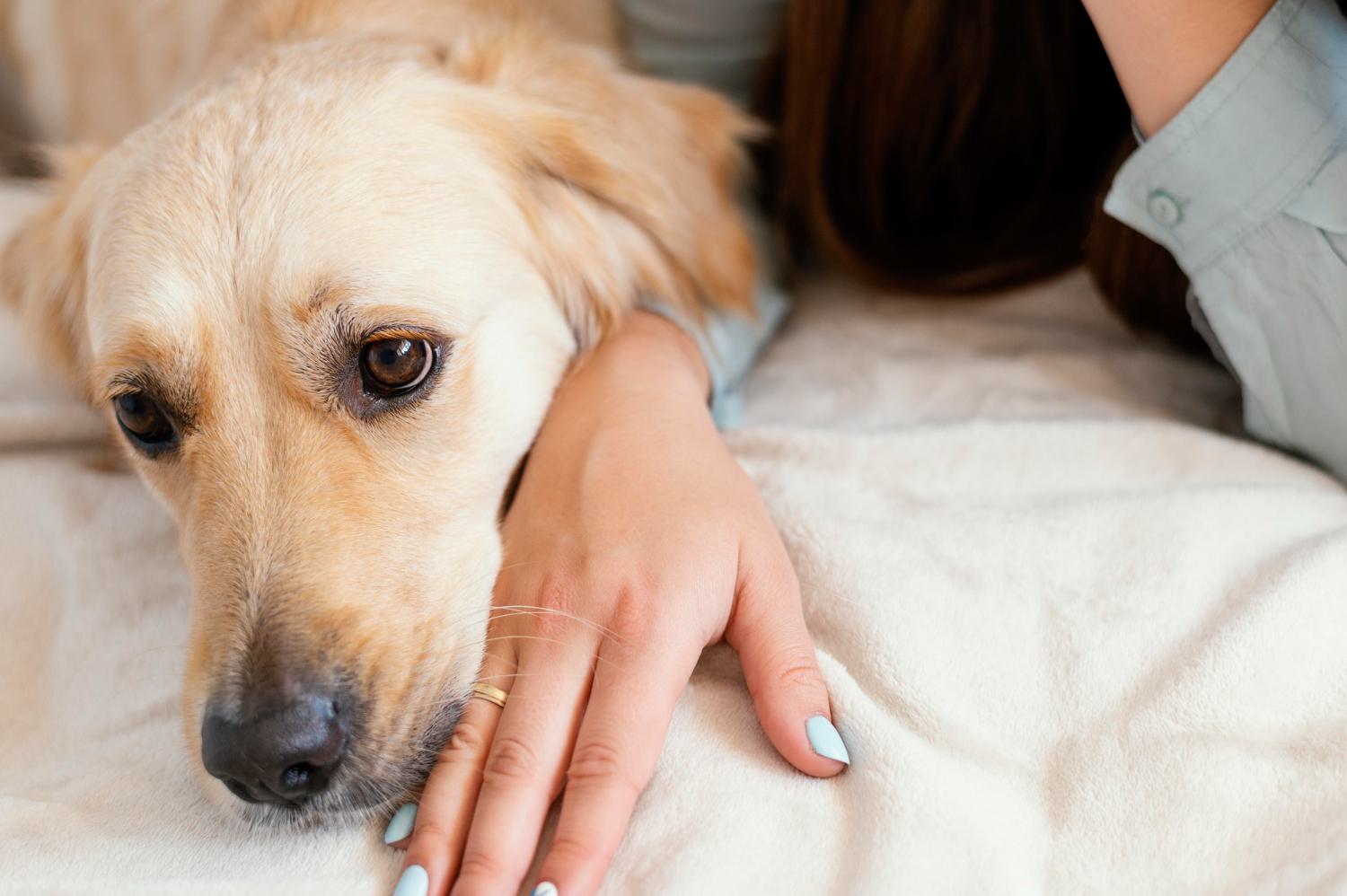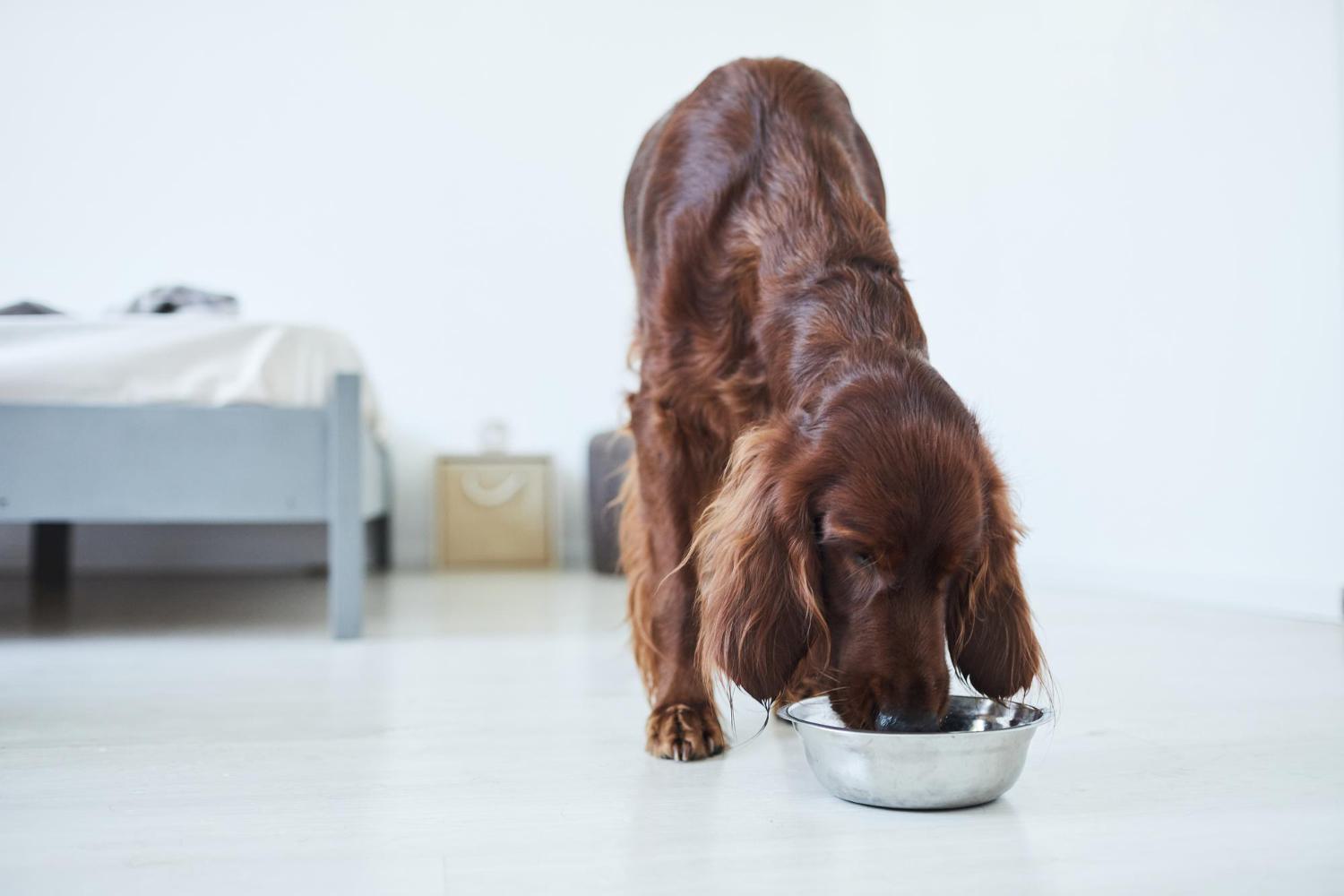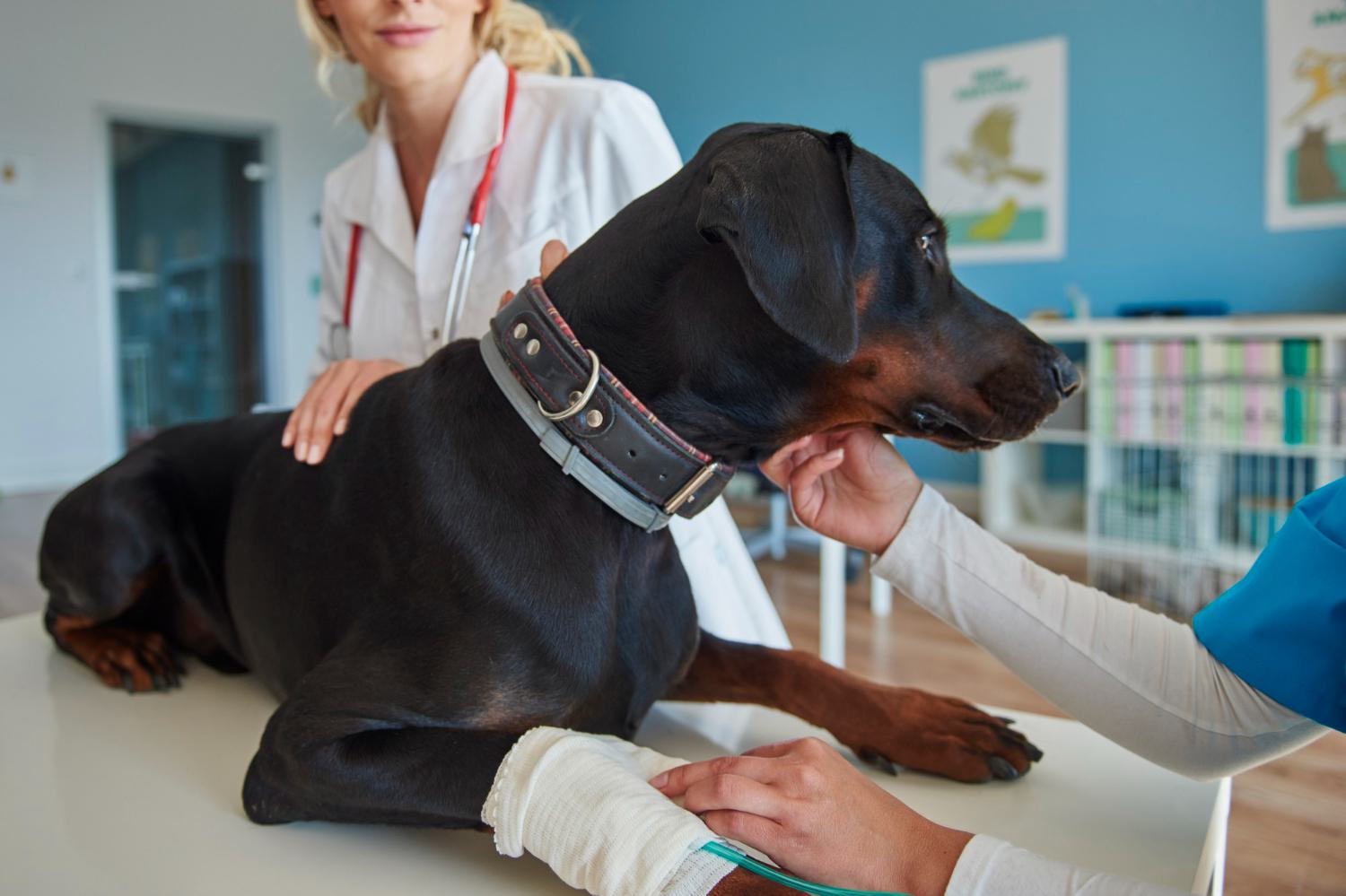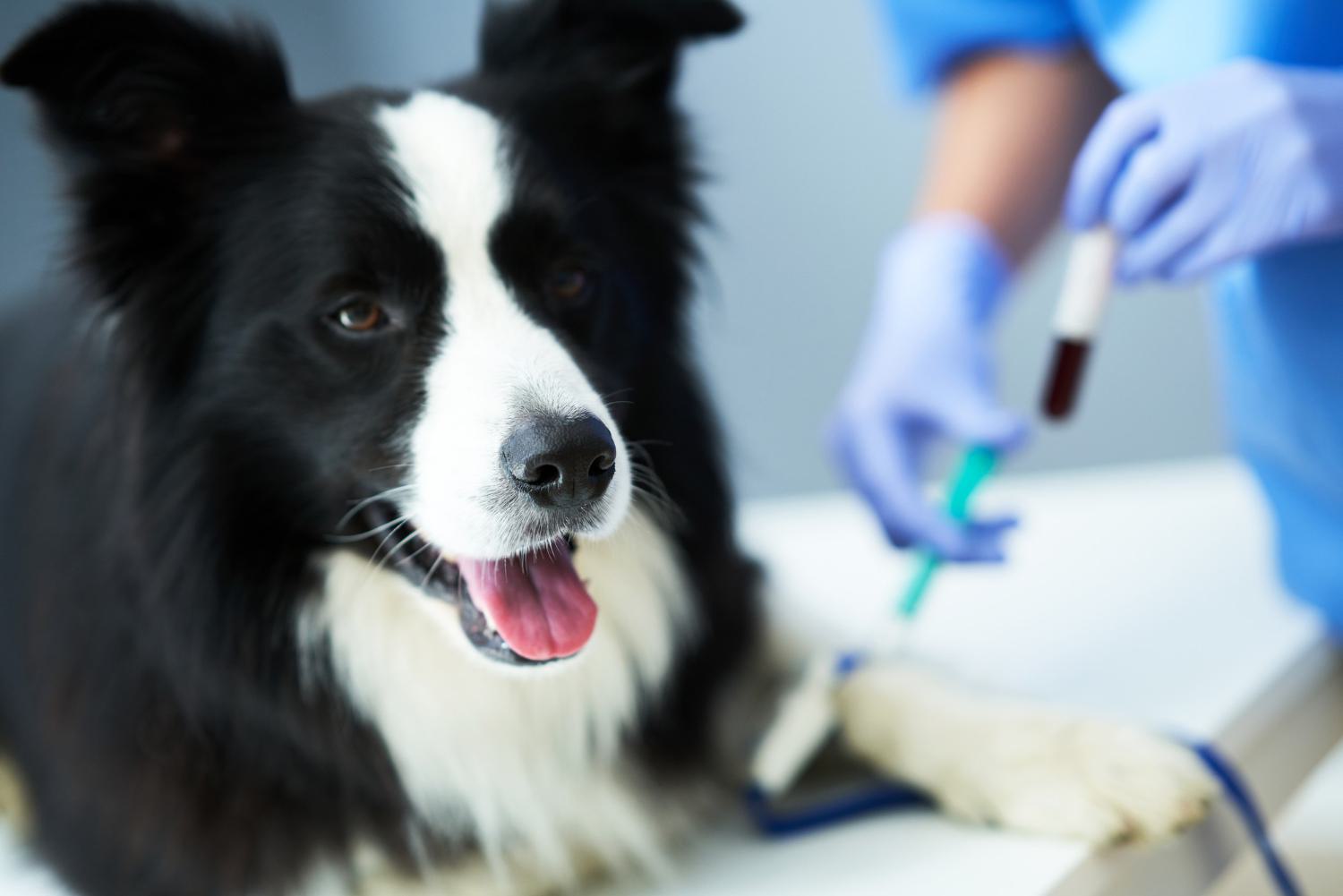Anaemia in Dogs: Causes and Best Treatment Options

By Evelyn Harcourt
février 17, 2025 - 1 min read
Canine anaemia can range from mild to severe. While some dogs have many symptoms, we may only know that others are anaemic thanks to their blood test results. How anaemia affects your pet depends on the extent of their condition, the underlying cause, and their general health.
This article discusses canine anaemia and its symptoms, causes, and management. Read on to learn more about how to help your dog with anaemia and its outlook.
What is Anaemia in Dogs?
Anaemia (American spelling: Anemia) is a reduction in the red blood cell count, the haemoglobin, or both.
Haemoglobin is the protein within the red blood cell that carries oxygen. Without oxygen being carried around the body, the tissues become damaged, which can have catastrophic consequences.
Types of Anaemia in Dogs
We broadly classify anaemia into two main groups, depending on the response of the bone marrow.
Regenerative Anaemia
When anaemia is regenerative, the bone marrow responds and makes more reticulocytes. These immature red blood cells mature into red blood cells within a few days. We’d expect the anaemia to be regenerative after cases of sudden blood loss from trauma, for example.
Non-Regenerative Anaemia
Non-regenerative anaemia is often more concerning, as the bone marrow does not attempt to replace lost blood cells. People with chronic diseases, such as kidney failure or hypothyroidism, generally have this type of anaemia.

Causes of Anaemia in Dogs
Anaemia is not an uncommon condition, and frustratingly, there are a huge number of possible causes. The vet’s job is to decipher why it occurs and how to treat or manage it.
Blood Loss
Sudden blood loss means a lower level of red blood cells and haemoglobin. This is seen, for example, during surgical blood loss or after a dog is hit by a car.
Haemolysis
Haemolysis is the destruction of red blood cells within the body. This is frequently caused by an immune-mediated disease called IMHA (Immune Mediated Haemolytic Anaemia), in which the body’s immune system attacks its own cells.
Bone Marrow Disorders
The bone marrow is a driving force behind red blood cell production. When it is not working properly due to cancer or recent toxicity, this will affect the level of blood cell production.
Chronic Diseases
Ongoing medical issues affect most of the body's functions. They can interfere with how iron is used by the body and with the production of EPO (erythropoietin), the hormone that stimulates red blood cell production within the marrow.
Nutritional Deficiencies
Cells cannot be made efficiently without the right fuel and building blocks. B9, B12, and iron are all key components in preventing anaemia.

How to Recognise the Symptoms
Signs of anaemia are sometimes subtle and can wax and wane, meaning it is not always easy to diagnose.
Early Signs of Anaemia
Initially, we may notice mild signs such as a slight lethargy, faster breathing, or a reduced appetite.
Advanced Symptoms
As the condition progresses, symptoms can include visibly pale gums, breathlessness, trouble getting about, weight loss, and even a heart murmur.
How to Diagnose Anaemia in Dogs
If you suspect your dog may be anaemic or simply realise it’s unwell, it is essential that they’re seen at their local clinic for evaluation.
Veterinary Examination
Your vet will check your dog from nose to tail. If anaemic, they may notice that their gums are pale and that their heart and breathing rates are faster than expected. Some dogs will also have a heart murmur.
Diagnostic Tests
Your vet is likely to run a few tests to get a better idea of what is going on. This can include:
- Complete blood count
- Biochemistry profile
- Coombs test. To check for antibodies, in the case of IMHA
- Coagulation profile. To ensure the blood can clot appropriately
- Blood film examination
Depending on what they suspect is the issue, they may also suggest some imaging and/or a bone marrow aspiration.

Best Treatment Options for Dogs With Anaemia
The best way to treat your dog will depend on why they’ve developed the anaemia.
Treating Underlying Causes
If there is an underlying issue, this must be addressed urgently. For example, if a dog is bleeding internally due to rat bait toxicity, we’d provide the antidote (Vitamin K) as soon as possible.
Medication
In cases of IMHA, medicine may be needed to treat parasites, address an infection, or reduce the body’s immune response.
There is not one specific medicine to give to those who are anaemic. However, sometimes EPO will be given, for example, if a dog has chronic kidney disease and a low blood count.
Blood Transfusions
Transfusions are sometimes needed when the red cell count falls very low, significantly when it drops suddenly and the dog isn’t coping well.
Nutritional Supplements
Some dogs benefit from B vitamins, iron, or vitamin C supplements. However, not every dog requires these supplements; starting them without veterinary guidance is not advised.

How to Help a Dog with Anaemia at Home
If your dog has received a diagnosis of anaemia, there are things you can do to help out from home, alongside their veterinary care.
Home Care Tips
Ensure your dog has plenty of space for resting and that the home is calm and quiet. As they may feel cold, ensure the home is comfortable.
Provide a balanced diet, and consider warming their food up if they need to be encouraged to eat.
Regular Monitoring
Keep a close eye on your dog to ensure it’s recovering as expected. Monitor its gum colour, energy levels, appetite, and breathing rate. If you are concerned that it may be deteriorating, contact your emergency vet.
Preventive Measures for Your Dog
You cannot prevent every case of anaemia, but you can take some steps.
Regular Veterinary Check-ups
We advise yearly check-ups for every dog, though those who are on medication and seniors should be seen more often. This ensures we can detect any medical issues early on.
Preventing Parasite Infestations
Routine parasite prevention is essential to prevent worm, flea, and tick burdens. Remember, many internal parasites are microscopic and are not always visible in the stool.
Balanced Nutrition
Your dog requires a balanced diet to produce red blood cells. This is usually achieved by feeding a good-quality, commercial dog food. Those who want to feed a homemade diet should consult with a vet or nutritionist first to ensure it is not lacking in any key nutrients.
When to Seek Immediate Veterinary Care
Sometimes, these dogs require urgent veterinary care.
Emergency Signs
Signs that your dog is not coping well would include:
- White or very pale gums
- Laboured breathing
- Weakness
- Extreme lethargy
- Ongoing bleeding
- Bruising under the skin
- Abdominal swelling
- Suspected toxicity
- Jaundice (yellow mucous membranes)
- Bloody vomiting or diarrhoea
Get More Help for Anaemia in Dogs
For further help, you can contact us at any time. We can determine if your dog has anaemia, and start them on the treatment plan they need.
FAQs
How long does treatment for anaemia take?
Those who have lost blood can regenerate their red blood cells in a few days. However, they may remain anaemic for longer if they’ve lost a lot of blood or if they have a chronic underlying disease.
Are there home remedies for anaemia in dogs?
No, dogs generally need veterinary care to determine the cause of their anaemia. It is not advised to trial supplements such as iron before a vet assessment, as this could do more harm than good.
Can anaemia recur in dogs after treatment?
Anaemia can recur, depending on the initial cause. We would not expect this in cases of trauma or toxicity, but about 1 in 5 dogs with IMHA experience a relapse.
Continue reading

Cat Tail Shaking: Is it an Emergency?
Learn whether your cat's tail shaking is normal, a warning, or urgent.
Read article
Eclampsia in Dogs: Symptoms, Causes and Treatments
Spot eclampsia fast, symptoms, causes, and vet treatments to protect mum and pups.
Read article
Dystocia in Dogs: Symptoms and Treatment
Dystocia in dogs: signs of trouble in labour, vet treatment, and when to call.
Read article